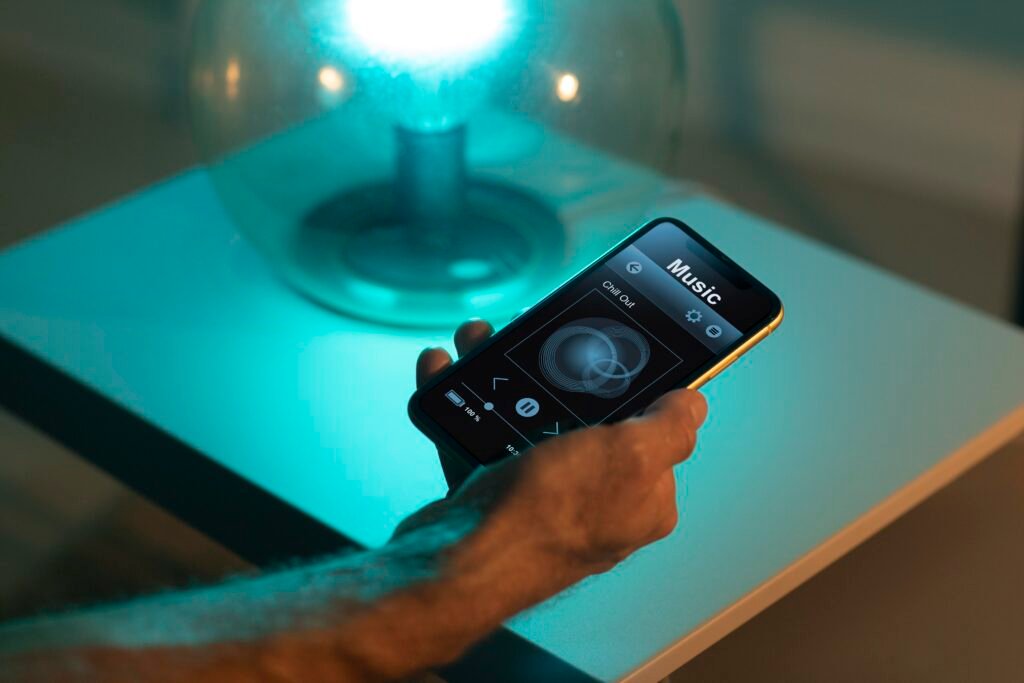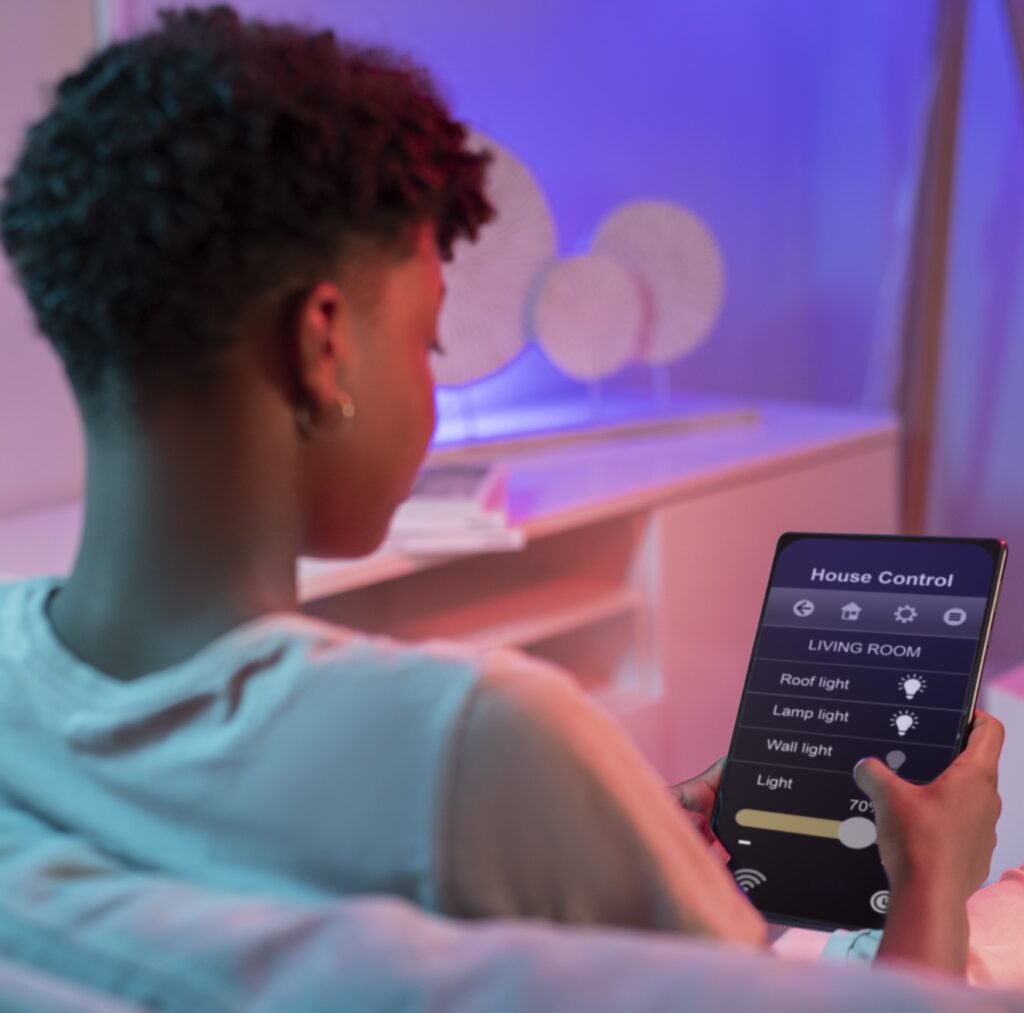Introduction
In today’s rapidly evolving technological topography, innovative smart Lighting Solutions for Architectural Designs have emerged as game-changers. These advanced systems enhance the aesthetic appeal of spaces and offer unparalleled control and functionality. By integrating smart lighting into architectural projects, designers and architects can create dynamic environments that adapt to various needs and preferences. In this blog, we will delve into how smart lighting technologies are revolutionizing architectural designs, offering insights into their benefits, applications, and future trends.
Table of Contents
The Evolution of Lighting in Architecture
Historical Perspective
Lighting has always been a crucial element in architecture, evolving from basic torches and candles to sophisticated electric lighting. Early architectural lighting focused primarily on illumination and functionality. However, as technology advanced, so did the role of lighting in design.
The Advent of Smart Lighting
Smart Lighting Solutions for Architectural Designs represents the latest evolution in this journey. With the advent of smart technologies, lighting systems have become more than just light sources; they now offer versatility, energy efficiency, and a range of interactive features that can transform any space.
Benefits of Smart Lighting in Architectural Designs

Benefits of Smart Lighting in Architectural Designs
Enhanced Aesthetic Appeal
One of the primary advantages of incorporating smart lighting into architectural designs is its ability to enhance aesthetic appeal. Smart lighting systems allow for customizable color temperatures, brightness levels, and light intensities, enabling designers to create visually stunning environments that can change dynamically throughout the day.
Improved Functionality
Smart lighting solutions offer greater functionality compared to traditional lighting. Features such as automated scheduling, remote control, and integration with other smart home devices provide unparalleled convenience and control. This functionality is particularly beneficial in architectural designs where different lighting scenarios are required for various activities and times of day.
Energy Efficiency
Energy efficiency is another significant benefit of smart lighting. Modern smart lighting systems often utilize LED technology, which consumes less power and has a longer lifespan compared to traditional incandescent bulbs. Additionally, smart systems can be programmed to adjust lighting levels based on occupancy and natural light, further reducing energy consumption and operating costs.
Enhanced Safety and Security
Smart lighting also enhances safety and security in architectural designs. Features such as motion sensors and automated lighting schedules can deter potential intruders and ensure well-lit pathways and entryways. Integration with home security systems can also provide real-time alerts and control over lighting conditions.
Applications of Smart Lighting in Architectural Designs

Applications of Smart Lighting in Architectural Designs
Residential Spaces
In residential architecture, Smart Lighting Solutions for Architectural Designs can create personalized living environments. Homeowners can use smart lighting to set moods, enhance comfort, and optimize energy usage. For example, automated lighting can simulate occupancy when homeowners are away, creating a sense of security.
Commercial Spaces
In commercial architecture, Smart Lighting Solutions for Architectural Designs can improve the functionality and ambiance of office spaces, retail stores, and hospitality venues. Adjustable lighting can be used to highlight products, create welcoming environments, and support various business operations. In office environments, smart lighting systems can adapt to different tasks, such as focused work or collaborative meetings, enhancing productivity and comfort.
Public Spaces
Public spaces such as parks, museums, and transportation hubs can benefit greatly from innovative Smart Lighting Solutions for Architectural Designs. Dynamic lighting can highlight architectural features, guide visitors, and create engaging experiences. For example, smart lighting can adjust based on the time of day or special events, adding to the overall atmosphere and functionality of public areas.
Architectural Features
Smart Lighting Solutions for Architectural Designs can also be used to accentuate specific architectural features, such as facades, sculptures, and landscapes. By using programmable lighting, designers can highlight these elements in various ways, creating dramatic effects and drawing attention to key design aspects.
Future Trends in Smart Lighting Solutions for Architectural Designs

Future Trends in Smart Lighting Solutions for Architectural Designs
IoT and AI
The future of Smart Lighting Solutions for Architectural Designs for Architectural Designs is closely tied to advancements in the Internet of Things (IoT) and artificial intelligence (AI). IoT connectivity allows smart lighting systems to interact with other devices and systems, creating more cohesive and automated environments. AI can further enhance this integration by learning user preferences and adjusting lighting conditions accordingly.
Sustainability and Green Technology
Sustainability will continue to be a major focus in smart lighting design. Future innovations are expected to include even more energy-efficient technologies, such as solar-powered lighting and advanced sensors that minimize energy waste. Designers will increasingly prioritize eco-friendly solutions that contribute to greener architectural practices.
Interactive and Immersive Experiences
As technology advances, Smart Lighting Solutions for Architectural Designs for Architectural Designs will play a key role in creating interactive and immersive experiences. This includes the use of augmented reality (AR) and virtual reality (VR) to visualize and control lighting effects in real time. Such advancements will allow designers to experiment with new ways of integrating lighting into architectural spaces.
Enhanced User Customization
Future Smart Lighting Solutions for Architectural Designs for Architectural Designs will offer even greater levels of user customization. With more sophisticated interfaces and control options, users will have the ability to fine-tune lighting settings to their exact preferences. This will enable more personalized and adaptive lighting experiences in both residential and commercial environments.
Advanced Technologies in Smart Lighting Solutions for Architectural Designs
Adaptive Lighting Systems
Adaptive lighting systems are an exciting development in Smart Lighting Solutions for Architectural Designs. These systems use sensors and data analytics to adjust lighting conditions in real-time based on environmental changes and user needs. For instance, adaptive systems can dim lights automatically as natural daylight increases, or adjust the color temperature to align with the time of day, Smart Lighting Solutions for Architectural Designs creates a more natural and comfortable lighting environment.
These systems can be particularly useful in spaces with fluctuating light levels, such as open-plan offices or educational environments. By maintaining optimal lighting conditions throughout the day, adaptive systems enhance productivity and comfort.
Human-Centric Lighting
Human-centric lighting, also known as circadian lighting, focuses on aligning lighting with the human circadian rhythm to improve well-being and productivity. These systems adjust the intensity and color temperature of light throughout the day to mimic natural sunlight patterns. This approach can help regulate sleep patterns, reduce eye strain, and boost overall health.
In workplaces, human-centric lighting can lead to increased employee satisfaction and performance by creating a more natural and supportive lighting environment. In healthcare settings, it can aid in patient recovery and support staff well-being.
Tunable White Lighting
Tunable white lighting systems offer the ability to adjust the color temperature of light from warm to cool, providing flexibility to suit different activities and preferences. This technology is particularly useful in spaces where lighting needs vary throughout the day, such as dining areas or workspaces.
For example, in a restaurant, tunable white lighting can create a warm and inviting atmosphere during dinner service and shift to a cooler, more vibrant light for breakfast or lunch. This adaptability enhances the overall experience and functionality of the space.
Case Studies: Pioneering Smart Lighting Projects
The Edge, Amsterdam

The Edge in Amsterdam, often referred to as one of the greenest and smartest buildings in the world, showcases the potential of smart lighting in commercial architecture. The building features advanced Smart Lighting Solutions for Architectural Designs that integrate with its IoT infrastructure, providing dynamic lighting conditions based on occupancy, time of day, and weather.
Lighting sensors adjust the brightness and color temperature to enhance productivity and comfort for occupants. The system also contributes to energy savings by ensuring lights are only used when needed, demonstrating how smart lighting can play a crucial role in sustainable design.
Apple Park, Cupertino

Apple Park, Apple’s corporate headquarters in Cupertino, integrates smart Lighting Solutions for Architectural Designs to enhance the user experience and environmental sustainability. The campus utilizes a combination of LED fixtures and intelligent control systems to create adaptive lighting scenarios that respond to natural light and occupancy patterns.
The Smart Lighting Solutions for Architectural Designs at Apple Park not only supports energy efficiency but also contributes to the building’s aesthetic, aligning with its modern and innovative design ethos. The integration of natural light and smart lighting technology helps create a harmonious and productive work environment.
The High Line, New York City

The High Line, an elevated park in New York City, incorporates smart lighting to enhance the visitor experience and highlight the park’s unique features. The lighting design includes dynamic, color-changing fixtures that adapt to events and seasons, creating a visually engaging environment.
Smart Lighting Solutions for Architectural Designs along the park’s pathways adjust based on foot traffic and environmental conditions, ensuring optimal visibility and safety. The project demonstrates how smart lighting can enhance public spaces, making them more interactive and enjoyable for visitors.
Practical Tips for Implementing Smart Lighting Solutions in Architectural Designs
Assessing Needs and Objectives
Before implementing Smart Lighting Solutions for Architectural Designs, it’s crucial to assess the specific needs and objectives of the project. Consider factors such as the purpose of the space, desired lighting effects, and any sustainability goals. This assessment will guide the selection of appropriate technologies and ensure that the lighting system aligns with the overall design vision.
Choosing the Right Technology
Selecting the right smart lighting technology is key to achieving the desired outcomes. Evaluate options such as LED vs. OLED, tunable white lighting, and adaptive systems to determine which best meets the project’s requirements. Additionally, consider compatibility with existing systems and integration with other smart devices.
Budgeting and Cost Management
While Smart Lighting Solutions for Architectural Designs offer long-term benefits, they can involve significant upfront costs. Develop a detailed budget that includes not only the initial investment but also ongoing maintenance and operational costs. Explore potential incentives or rebates for energy-efficient technologies to offset expenses and maximize return on investment.
Installation and Integration
Proper installation and integration are essential for the successful implementation of Smart Lighting Solutions for Architectural Designs. Work with experienced professionals to ensure that lighting fixtures, sensors, and control systems are installed correctly and integrated seamlessly with other building systems. This approach will minimize potential problems and ensure peak performance.
Ongoing Monitoring and Maintenance
Regular monitoring and maintenance are crucial to keeping Smart Lighting Solutions for Architectural Designs functioning effectively. Implement a monitoring system to track performance, identify any issues, and make adjustments as needed. Schedule periodic maintenance to address wear and tear and ensure that the system continues to meet performance and efficiency goals.
Conclusion
InnovativeSmart Lighting Solutions for Architectural Designs is transforming architectural design by offering enhanced aesthetic appeal, improved functionality, and energy efficiency. As technology continues to advance, the potential applications and benefits of smart lighting will expand, providing architects and designers with even more tools to create dynamic and engaging spaces. Embracing these technologies will not only elevate the design and functionality of architectural projects but also contribute to a more sustainable and interactive future.
By staying informed about the latest trends and advancements in smart lighting, architects and designers can harness these innovations to push the boundaries of architectural design and create spaces that are both visually stunning and functionally superior.




